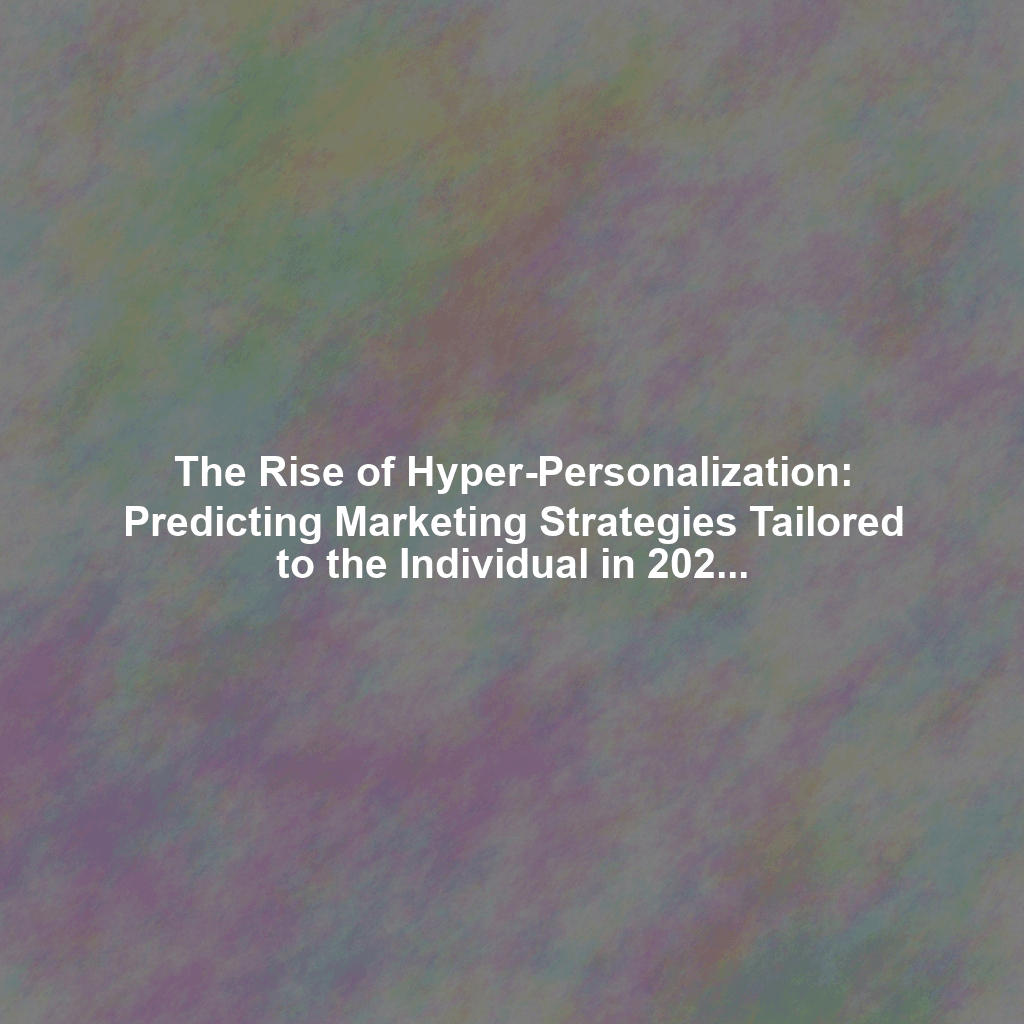The marketing landscape is in constant flux, but one trend is poised to explode in significance by 2026: hyper-personalization. Forget generic marketing messages aimed at broad demographics. We’re entering an era where campaigns are meticulously crafted for the individual, driven by breakthroughs in artificial intelligence (AI) and sophisticated data analytics. This article explores how hyper-personalization will redefine marketing, the technologies powering it, the ethical considerations it raises, and its potential impact on user experience, customer loyalty, and return on investment (ROI).
The Evolution from Segmentation to Individualization
Traditional marketing has relied heavily on segmentation – grouping customers into categories based on shared characteristics like age, location, or purchasing behavior. While segmentation has been useful, it’s inherently limited. It treats individuals within a segment as homogenous, overlooking the nuances of their unique needs and preferences. Hyper-personalization takes marketing to a completely new level by leveraging data to understand and cater to each customer on an individual basis. Imagine a world where every email, every website interaction, and every advertisement is tailored specifically to your tastes and needs, anticipating your desires before you even articulate them. That’s the power of hyper-personalization.
Key Technologies Fueling Hyper-Personalization
Several technologies are converging to make hyper-personalization a reality:
Artificial Intelligence (AI) and Machine Learning (ML)
AI and ML are the workhorses behind hyper-personalization. They analyze vast datasets to identify patterns, predict customer behavior, and automate the creation of personalized content. AI-powered recommendation engines, for example, can suggest products or services based on a user’s browsing history and past purchases. Natural Language Processing (NLP) enables marketers to understand the sentiment and intent behind customer communications, allowing for more relevant and timely responses.
Big Data Analytics
Hyper-personalization thrives on data. Big data analytics platforms collect and analyze data from a multitude of sources – website activity, social media interactions, purchase history, email engagement, and more – to create a comprehensive profile of each customer. These profiles provide marketers with the insights they need to create highly targeted and effective campaigns.
Customer Data Platforms (CDPs)
CDPs are centralized hubs that aggregate customer data from various sources into a unified customer profile. This single view of the customer enables marketers to deliver consistent and personalized experiences across all channels.
Real-Time Personalization Engines
These engines dynamically adjust content and offers based on a user’s real-time behavior. For example, if a user spends a significant amount of time browsing a particular product category on a website, the engine can automatically display related products or offer a discount to encourage a purchase.
Examples of Successful Hyper-Personalized Strategies
While still evolving, examples of hyper-personalization are becoming increasingly common:
- Personalized Product Recommendations: E-commerce sites like Amazon have been using recommendation engines for years, but they are becoming increasingly sophisticated, taking into account a wider range of factors, such as social media activity and browsing context.
- Dynamic Email Marketing: Emails that adapt their content based on a recipient’s past interactions, preferences, and even real-time location data.
- Personalized Website Experiences: Websites that display different content and layouts based on a user’s past behavior and preferences.
- Customized Advertising: Ads that are tailored to an individual’s interests and needs, based on their online activity and demographic information.
Ethical Considerations of Hyper-Personalization
The increasing power of hyper-personalization comes with significant ethical responsibilities. Marketers must be mindful of the following:
Data Privacy
Collecting and using personal data requires transparency and respect for user privacy. Companies must be clear about how they are collecting and using data, and they must obtain informed consent from users.
Algorithmic Bias
AI algorithms can perpetuate and amplify existing biases in data, leading to discriminatory outcomes. Marketers must be aware of these biases and take steps to mitigate them.
Transparency and Explainability
Users have a right to understand why they are seeing the content they are seeing. Marketers should be transparent about how their personalization algorithms work and provide users with the ability to control their data.
The “Creepiness Factor”
Personalization can become intrusive and unsettling if it is not done thoughtfully. Marketers must strike a balance between personalization and privacy to avoid creating a negative user experience.
The Impact on User Experience, Customer Loyalty, and ROI
When implemented ethically and effectively, hyper-personalization can have a profound impact on:
User Experience
By delivering relevant and engaging content, hyper-personalization can create a more enjoyable and rewarding user experience. This can lead to increased user engagement and satisfaction.
Customer Loyalty
When customers feel understood and valued, they are more likely to be loyal to a brand. Hyper-personalization can foster a stronger sense of connection between brands and their customers.
Return on Investment (ROI)
By targeting the right customers with the right message at the right time, hyper-personalization can significantly improve marketing ROI. Personalized campaigns typically have higher conversion rates and generate more revenue than generic campaigns.
Looking Ahead to 2026
By 2026, hyper-personalization will be the norm, not the exception. Companies that fail to embrace this trend will be at a significant competitive disadvantage. The key to success will be to leverage the power of AI and data analytics responsibly and ethically, focusing on creating personalized experiences that are both valuable and respectful of user privacy. As technology continues to evolve, we can expect even more sophisticated and innovative applications of hyper-personalization to emerge, transforming the way businesses connect with their customers.
 Skip to content
Skip to content

